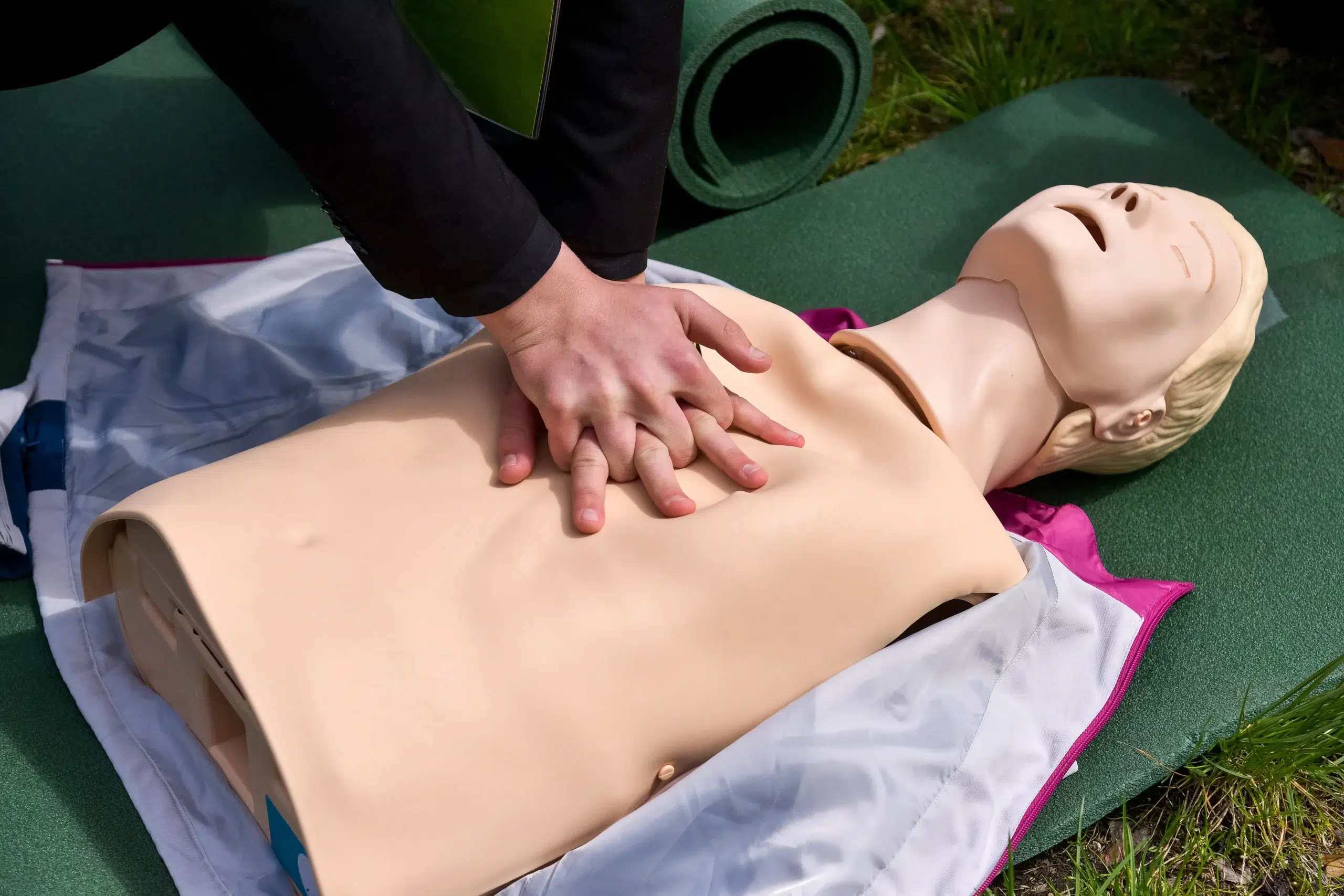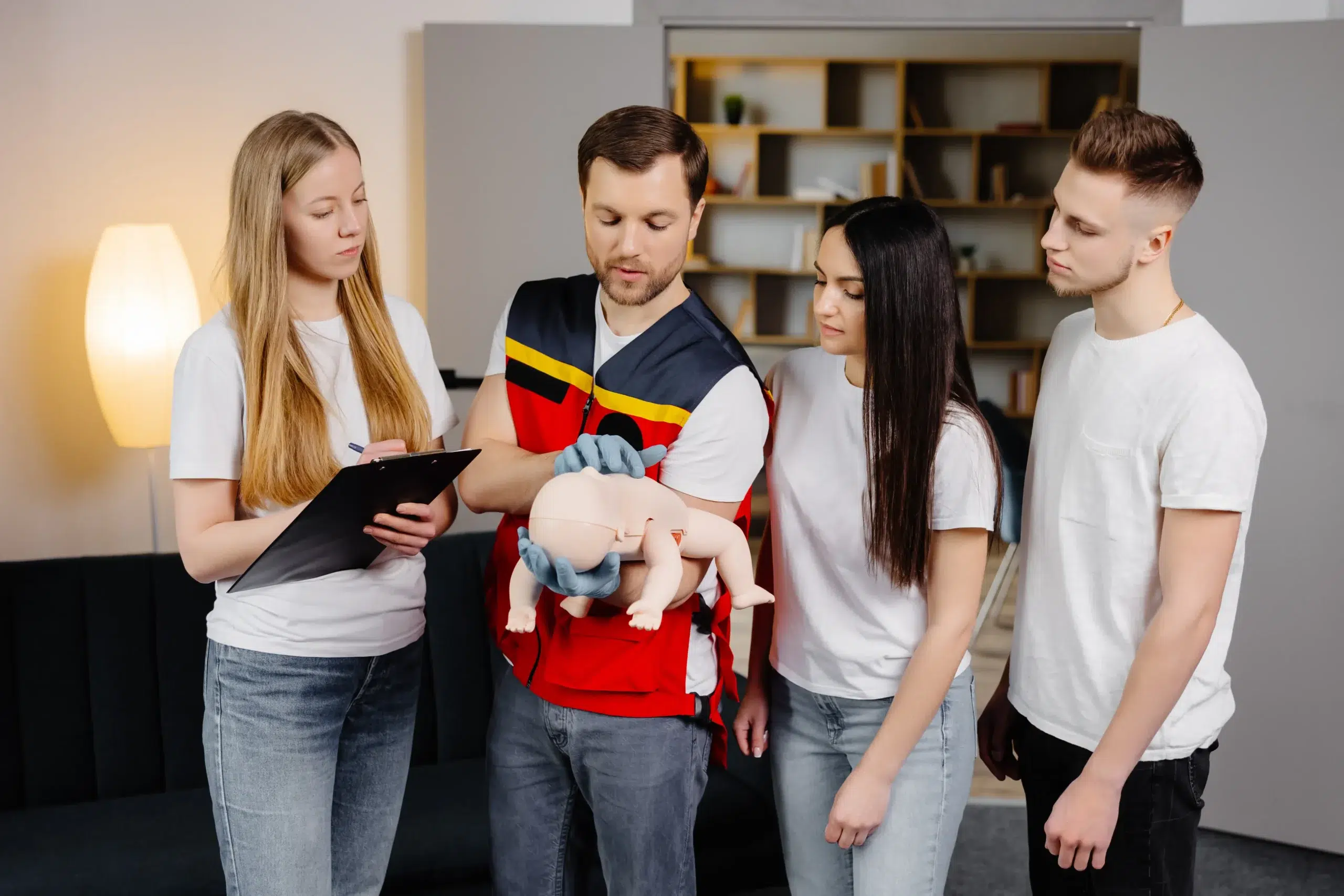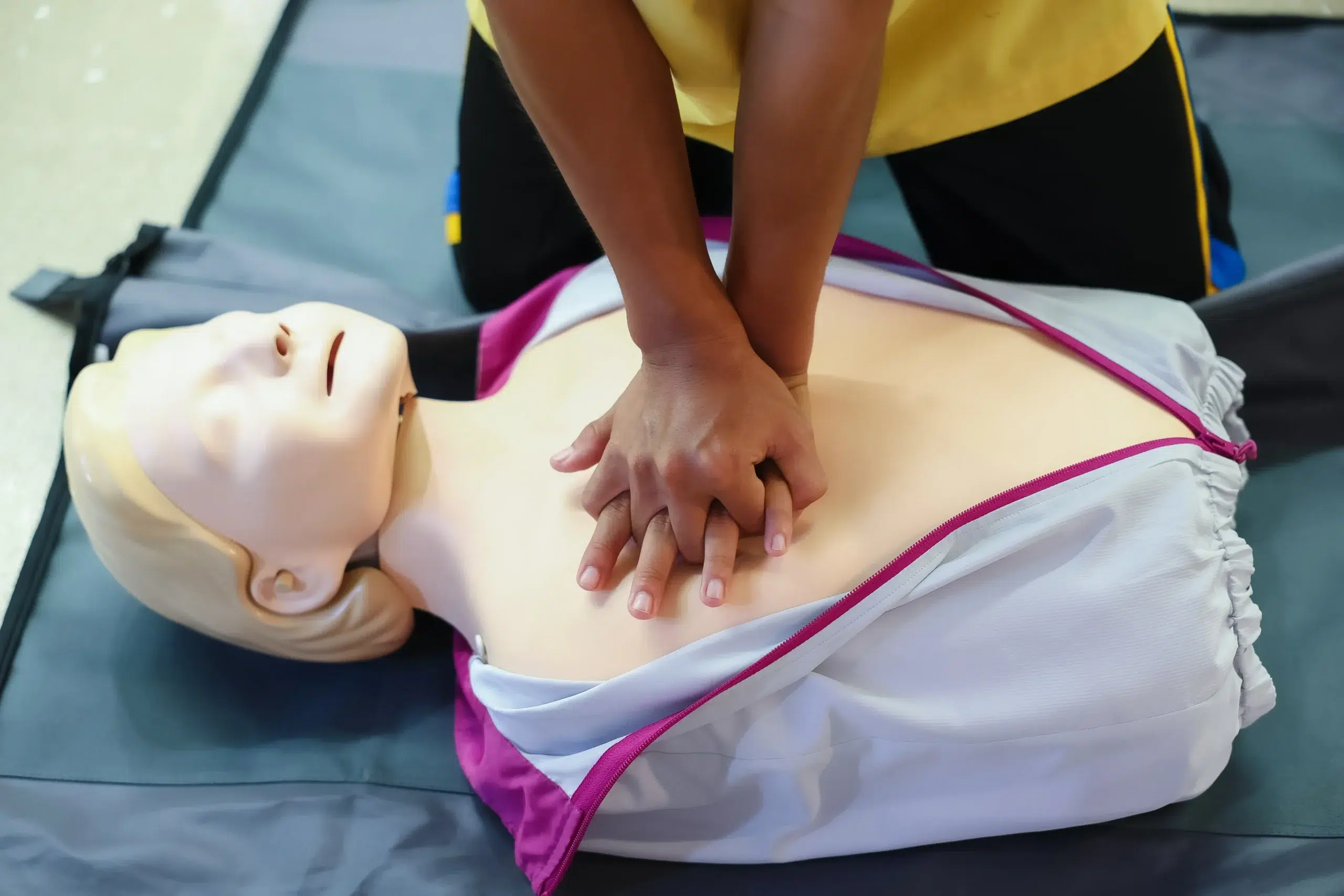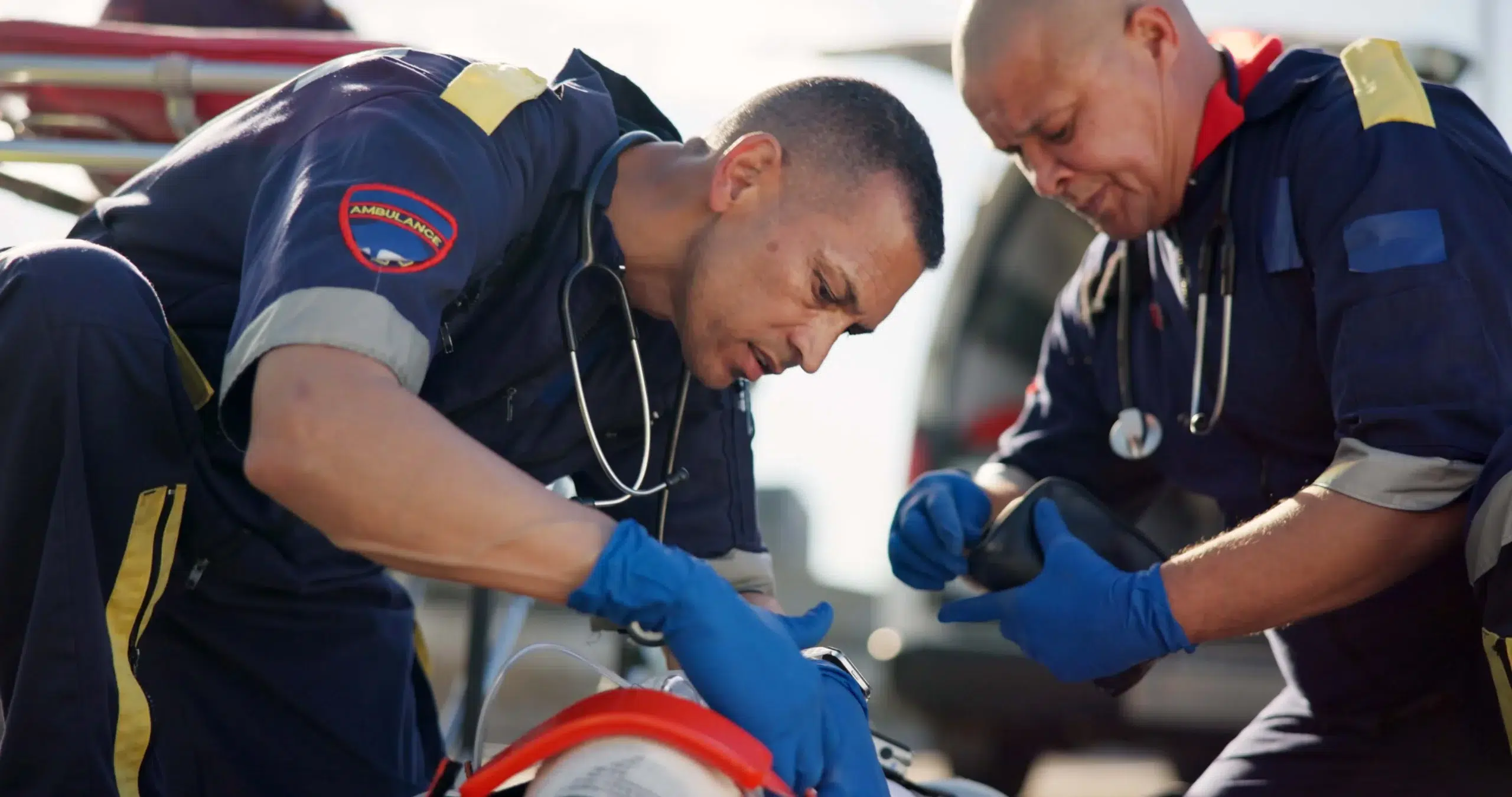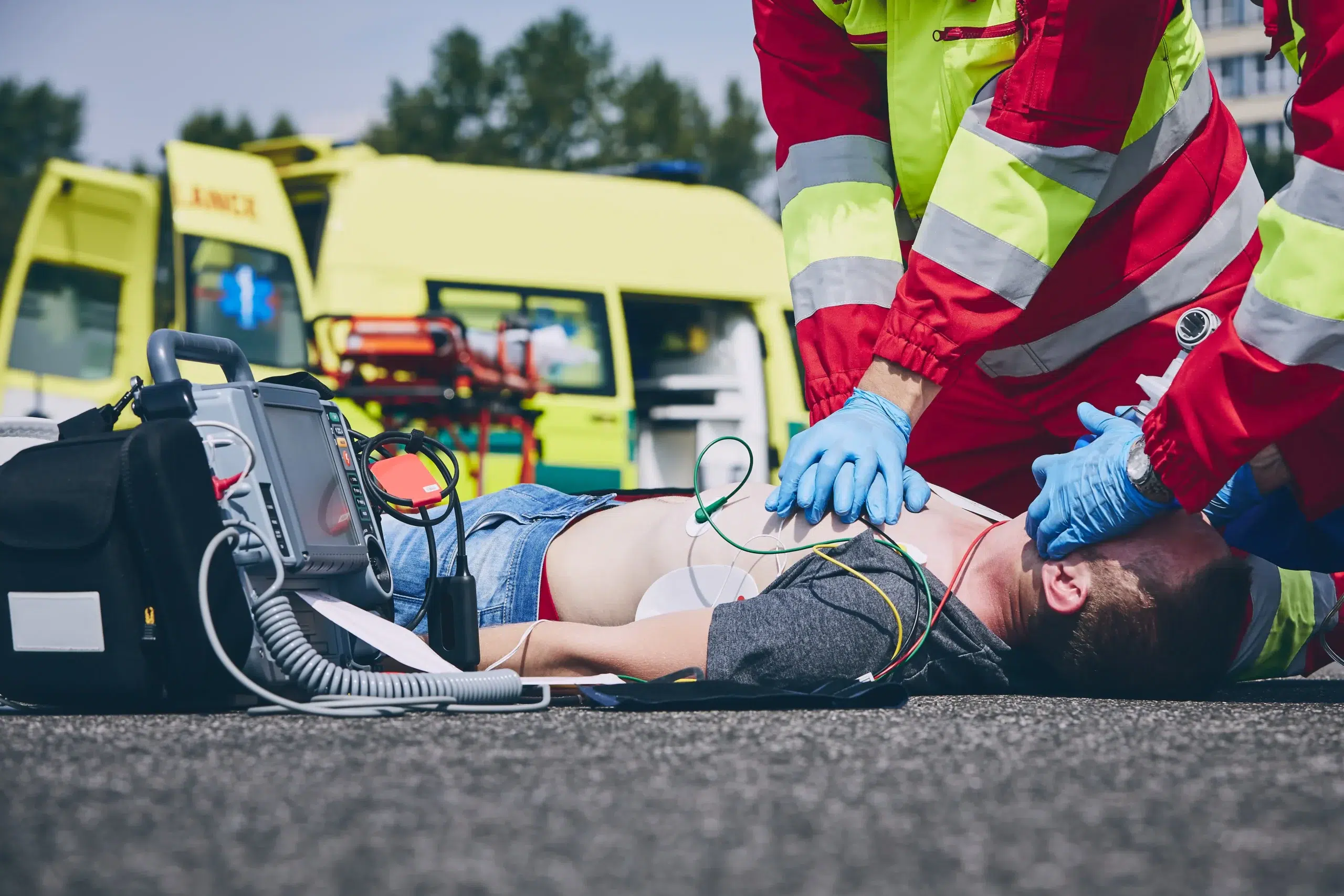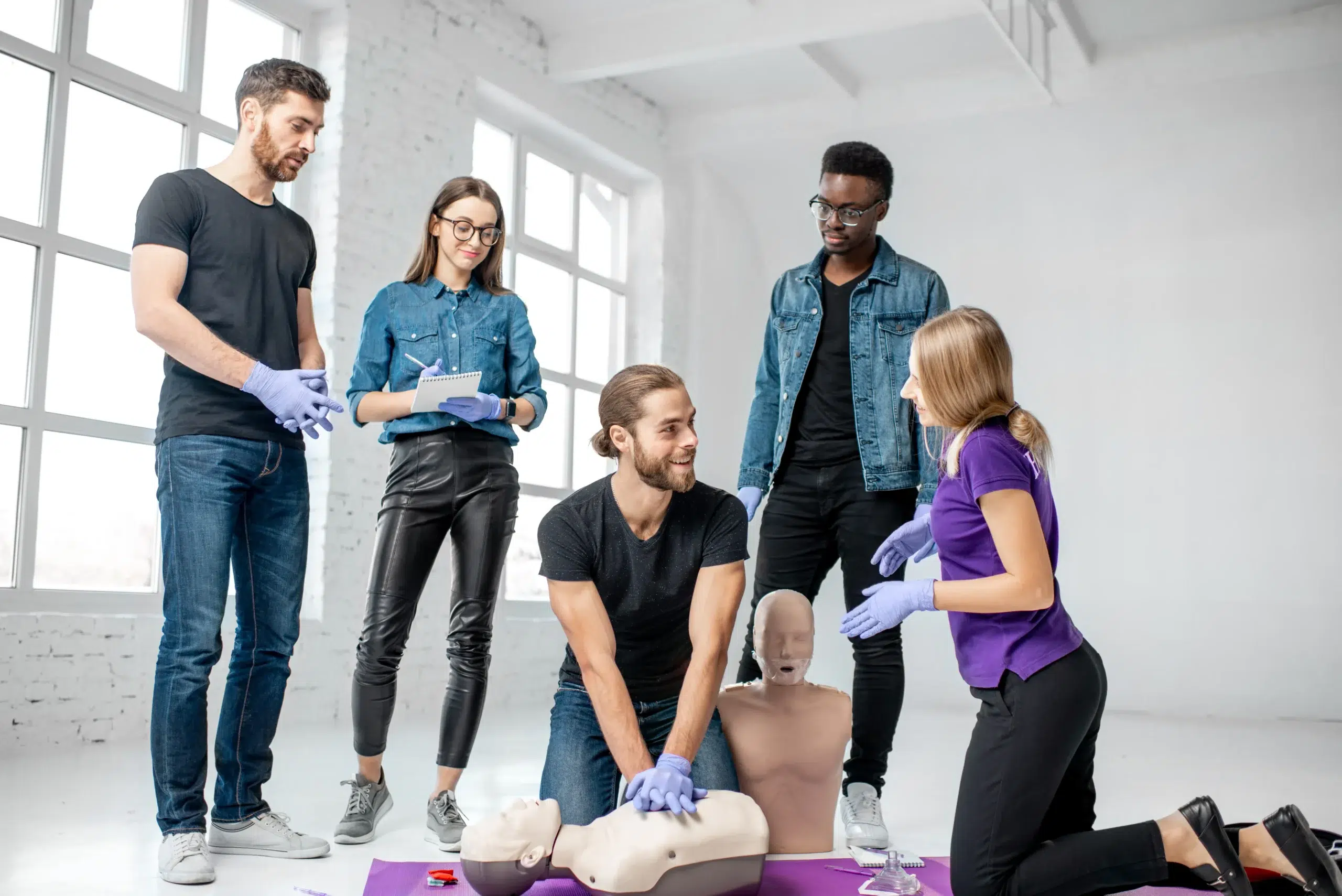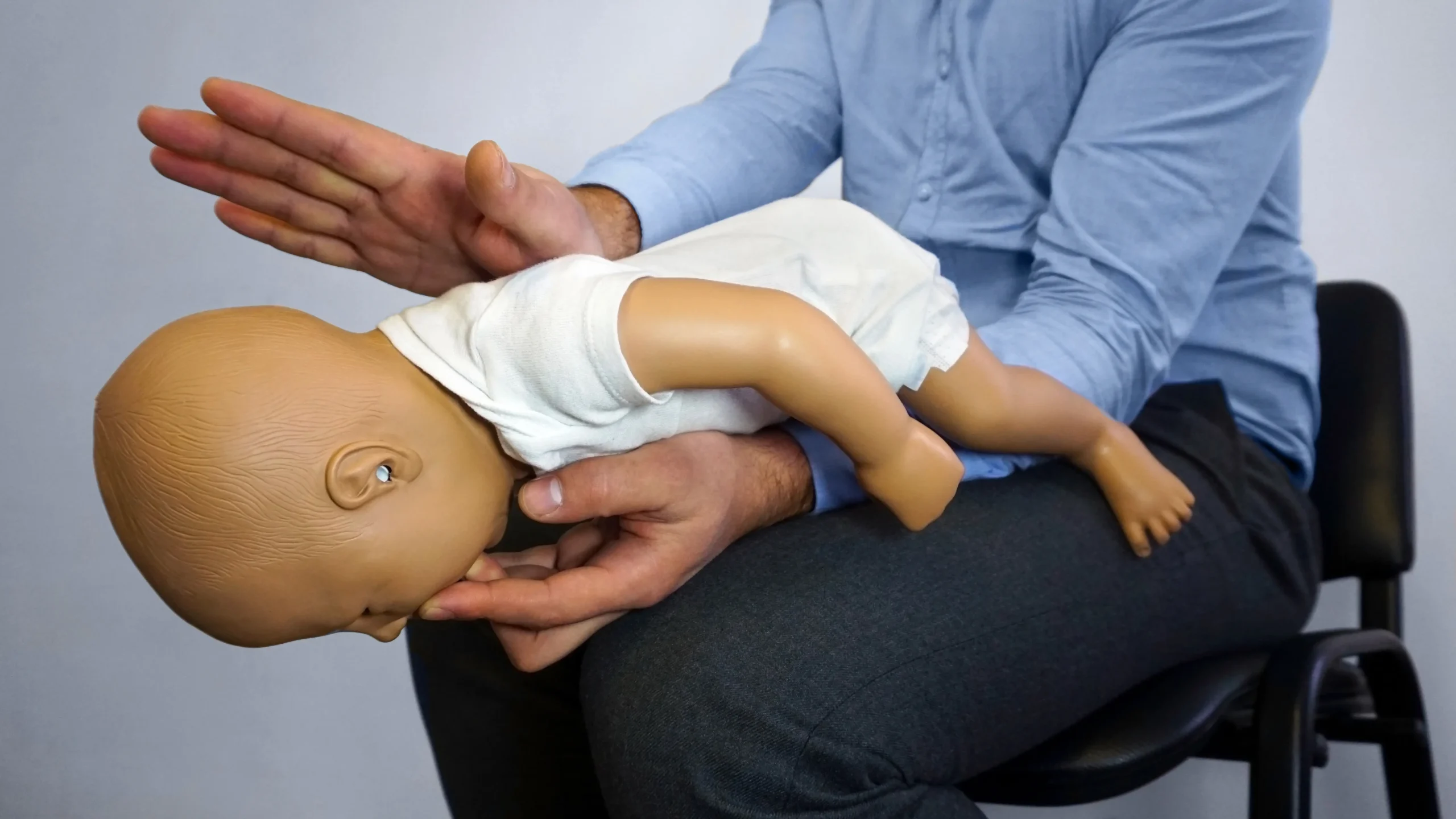Ready to gain life-saving skills and boost your career prospects? BLS certification empowers you to respond confidently to medical emergencies. Whether you’re a healthcare professional, a concerned parent, or simply someone who wants to be prepared, this guide breaks down everything you need to know about BLS certification, from finding the right course and understanding the costs to maintaining your skills and advancing your career. Plus, we’ll help you find BLS certification near me, so you can start your training journey right away.
Key Takeaways
- BLS certification empowers you to save lives: From CPR and AED use to airway management, BLS training gives you the skills to respond confidently in emergencies. Find a course format (in-person, online, or blended) that works for you.
- Finding the right BLS course is key: Consider factors like the provider’s reputation, course format, and cost. Reputable organizations like the American Heart Association, the American Red Cross, and local training centers like Safety Training Seminars offer various options.
- Staying current is essential: Renew your BLS certification every two years and stay informed about updated guidelines. Expand your skills with continuing education opportunities like ACLS and PALS.
What is BLS Certification & Why is it Important?
Knowing what BLS certification is and why it matters is the first step in choosing the right training. This section breaks down the basics of BLS, the skills you’ll gain, and its importance, especially in healthcare.
What is Basic Life Support (BLS)?
Basic Life Support (BLS) certification gives you the skills to respond to life-threatening emergencies. It’s foundational for saving lives, focusing on immediate intervention for cardiac arrest, respiratory distress, and choking. BLS certification is often required for many healthcare roles and other professions that prioritize safety. For more information, visit our page on CPR and First-Aid Certification.
What Skills Will You Learn in BLS Training?
BLS training is hands-on. You’ll learn how to perform high-quality CPR, use an automated external defibrillator (AED), and give effective rescue breaths. Airway management techniques are also key, ensuring you can help someone who’s struggling to breathe. These skills empower you to act confidently in emergencies, whether you’re a healthcare professional or want to be prepared. We offer discounts for group CPR classes.
Why is BLS Important for Healthcare Professionals and First Responders?
BLS certification is essential for healthcare professionals and first responders. It’s the bedrock of emergency care, ensuring they can provide immediate support during critical situations. It’s the first line of defense in medical emergencies, enabling faster response times and better patient outcomes. Our BLS courses in Newark meet these high standards. We also have information on RQI classes for those seeking advanced resuscitation training. Our low price guarantee ensures you’re getting the best value for this training.
How to Find BLS Certification Classes Near You
So, you’re ready to get your BLS certification—fantastic! Finding a course that works for you is easier than you think. This section breaks down how to find local training centers, what to look for in a quality provider, and some popular options to get you started.
Where to Find Local Training Centers (Online & Offline)
Finding a BLS course is pretty straightforward. Established providers like the American Red Cross and the American Heart Association offer courses throughout the country. You can easily find classes on their websites. Also check with local hospitals, community colleges, and dedicated training centers like Safety Training Seminars for additional options. A quick online search for “BLS classes near me” can also point you to convenient locations in your area. For those in the Fremont, Newark, and San Jose area, Safety Training Seminars offers daily BLS courses.
What to Look For in a BLS Provider
When you’re choosing a BLS provider, consider a few key things. First, what kind of course format are you looking for? Do you prefer in-person, online, or a blended learning approach? Think about the overall cost and compare pricing between different providers. Finally, do some research on the training center itself. Reading reviews and testimonials can give you a sense of their instruction quality and the overall learning experience. Safety Training Seminars offers a low price guarantee, so you know you’re getting a good value.
Popular BLS Certification Providers
Here are a few well-known BLS certification providers to check out:
Safety Training Seminars
Safety Training Seminars offers a wide selection of American Heart Association (AHA) courses, including BLS certification. They’re committed to making training accessible and affordable. They also offer discounted group rates.
American Heart Association
The American Heart Association (AHA) is a leading authority on BLS certification. Their certification process includes online coursework and an in-person skills assessment.
American Red Cross
The American Red Cross is a trusted name in BLS certification, with courses designed for healthcare providers and other professionals.
National CPR Foundation
The National CPR Foundation offers a variety of CPR and BLS certification courses geared toward healthcare professionals.
ProTrainings
ProTrainings provides a range of online and in-person BLS certification courses, emphasizing flexibility and ease of access for students.
Health & Safety Institute (HSI)
The Health & Safety Institute (HSI) offers BLS training suitable for both healthcare professionals and anyone looking to learn these essential skills.
BLS Certification: Formats, Costs, and Benefits
In-Person, Online, or Blended Learning: Which is Right for You?
Finding the right BLS certification course depends on a few things: your learning style, schedule, and budget. You’ll typically find courses in three formats: in-person, online, or blended learning (a mix of both). In-person classes offer hands-on training and direct interaction with instructors, ideal for those who thrive in traditional classroom settings and appreciate immediate feedback. Online courses offer flexibility and convenience, allowing you to learn at your own pace, wherever you have internet access. Blended learning combines the best of both worlds with online instruction and in-person skills practice and assessment. When selecting a BLS provider, consider the format, cost, and the training center’s reputation.
Pros and Cons of Each Format
Each format has its pluses and minuses. In-person training excels with immediate feedback and hands-on practice, but requires a fixed schedule and commute time. Online learning offers flexibility and self-pacing, but can sometimes feel less personal. Blended learning attempts to bridge this gap, balancing convenience and hands-on skill development. The best format depends on your individual needs and preferences. Regardless of your choice, BLS training provides essential life-saving skills, from CPR and AED use to airway management, equipping you to handle medical emergencies, whether you’re in healthcare or not.
Average Costs & Discounts
BLS certification costs vary based on the training provider, course format, and location. Expect courses to range from $70 to $100, but always check directly with the training center for current pricing. Some providers, like Safety Training Seminars, offer a low price guarantee and discounts for groups, students, or returning customers. It’s always worth asking about potential savings and keeping an eye out for promotions.
Long-Term Benefits and Career Advancement
BLS certification is a valuable investment, whether you’re pursuing a healthcare career or want to be prepared for emergencies. It equips you with essential skills like CPR, AED use, and first aid, applicable in various situations. For healthcare professionals, BLS certification is often a job requirement and can lead to career advancement. Even outside of healthcare, having BLS certification shows you’re committed to safety and can be a valuable asset. The American Red Cross offers BLS training for individuals and teams, with in-person and blended Simulation Learning options. This training can make you a stronger candidate in the job market and give you the confidence to act quickly and effectively in critical situations.
Get Ready for Your BLS Certification
So, you’ve decided to get BLS certified—that’s fantastic! Knowing you’re about to gain crucial life-saving skills is empowering. This section covers what to expect during your BLS training, helpful study resources, and addresses some common misconceptions. Let’s get you prepared.
What to Expect During Training
BLS training is a blend of interactive learning and hands-on practice. Expect a dynamic environment where you’ll learn essential skills like CPR, using an AED, and airway management. Your instructor will guide you through the process, demonstrating techniques and providing feedback as you practice. You’ll work with mannequins to simulate real-life scenarios, building your confidence and muscle memory. Whether you’re a healthcare professional or preparing for general emergencies, BLS training equips you to respond effectively. For more information on our courses, take a look at our CPR and First-Aid Certification page.
Study Resources and Tips for Success
While BLS courses are designed to be comprehensive, reviewing the material beforehand can increase your confidence. Many organizations, like the American Red Cross, offer resources such as online study materials, practice tests, and videos. Take advantage of these resources to familiarize yourself with the concepts before class. During training, active participation is key. Ask questions, engage in discussions, and take detailed notes. The more involved you are, the more you’ll retain.
Common Challenges and Misconceptions
One common misconception is that finding a quality BLS course is difficult. Many reputable providers, including the American Heart Association, the American Red Cross, and local training centers like Safety Training Seminars, offer a range of options. When choosing a provider, consider factors like course format (online, in-person, or blended learning), cost, and the training center’s reputation. Another challenge some students face is test anxiety. Remember, the goal is to learn life-saving skills, and your instructors are there to support you. Take deep breaths, focus on what you’ve learned, and trust your training. To make training more accessible, we offer a low price guarantee.
How to Maintain Your BLS Certification
Once you’ve earned your BLS certification, staying current is key for providing effective life-saving care. This section covers BLS renewals, staying informed about guideline updates, and continuing education opportunities to advance your skills.
Renewal Requirements and Process
BLS certification is typically valid for two years. To maintain your credentials, complete a renewal course before your certification expires. The American Heart Association (AHA) recommends renewing within the last 30 days of your certification period. This ensures you’re always practicing the most current BLS techniques. Check with your certifying organization, such as the AHA, for their specific renewal requirements. Organizations like Safety Training Seminars offer streamlined BLS renewal courses designed to refresh your core skills and knowledge.
Stay Up-to-Date with BLS Guidelines
Even if your certification isn’t up for renewal yet, staying informed about evolving BLS guidelines is crucial. Medical practices and recommendations can change, so staying aware of updates is important for providing the best possible care. The AHA regularly publishes updated guidelines. Subscribing to AHA publications or following them on social media can help you stay current. Check out our blog for updates on important changes to CPR and first-aid guidelines.
Continuing Education Opportunities
Beyond renewing your BLS certification, consider expanding your skillset with continuing education. Advanced training, such as Advanced Cardiovascular Life Support (ACLS) or Pediatric Advanced Life Support (PALS), builds upon your BLS foundation and can create new career opportunities. These courses cover more complex scenarios and specialized techniques. Safety Training Seminars offers various courses, including ACLS and PALS, to help you advance your skills. We also offer information on specialized training like RQI courses, which focus on delivering high-quality CPR.
Related Articles
- Find BLS Training Near Me: Top Providers & Courses – Newark CPR Classes
- BLS for Healthcare Providers in Newark: A Practical Guide – Newark CPR Classes
- BLS Certification in San Jose: Your 2024 Guide – Newark CPR Classes
- HeartCode BLS Fremont: Your Certification Guide – Newark CPR Classes
- BLS Recertification Near Me: Your Guide – Newark CPR Classes
Frequently Asked Questions
How often do I need to renew my BLS certification? BLS certification typically needs renewal every two years. It’s best to check with your certifying organization (like the American Heart Association or American Red Cross) for their specific guidelines, but plan on recertifying every two years to keep your skills current.
What’s the difference between online, in-person, and blended BLS courses? In-person classes provide hands-on training and direct interaction with an instructor. Online courses offer flexibility to learn at your own pace, while blended learning combines online instruction with in-person skills practice and testing. The best format depends on your learning style and schedule.
What if I don’t work in healthcare? Is BLS certification still beneficial? Absolutely! While essential for healthcare professionals, BLS certification benefits anyone who wants to be prepared for emergencies. Knowing how to perform CPR, use an AED, and provide basic life support can make a real difference in any situation.
How much does BLS certification cost? Costs vary depending on the training provider, course format, and your location. Generally, expect to pay somewhere between $70 and $100. Many providers offer discounts for groups, students, or returning customers, so it’s always worth asking. Safety Training Seminars, for example, has a low price guarantee.
Where can I find BLS classes near me? You can find BLS classes through several avenues: national organizations like the American Red Cross and American Heart Association, local hospitals and community colleges, and dedicated training centers like Safety Training Seminars. A quick online search for “BLS classes near me” can also help you locate convenient options. If you’re in the Fremont, Newark, or San Jose area, check out Safety Training Seminars.
